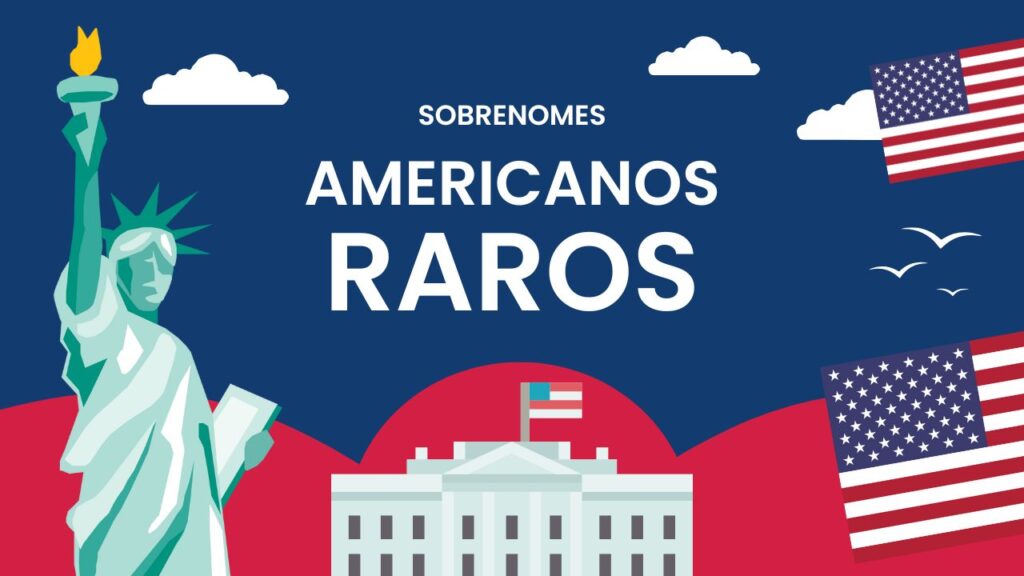Rare American surnames, known as “Sobrenomes Americanos Raros” in Portuguese, represent an intriguing area for exploration. Understanding these surnames is important as it not only reflects America’s diverse cultural heritage but also highlights the unique identities that comprise the nation. When you explore these surnames, you open a window into the past, discovering the migration and assimilation narratives of numerous families.
In today’s interconnected world, grasping the diversity within surnames allows you to appreciate the broad range of cultural and ethnic backgrounds present in America. It also sheds light on the ways in which different generations have adapted to their new environments, maintaining vestiges of their ancestral identities through their surnames.
Understanding Rare American Surnames
To appreciate the uniqueness of rare American surnames, it’s important to consider their varied origins and backgrounds. These surnames often originate from early immigration groups, representing a blend of languages and cultures. Immigration patterns throughout American history significantly influenced the richness of today’s name pool. The influx of settlers from Ireland, Scotland, Germany, and other parts of Europe led to the introduction of many uncommon surnames that still exist today.
Understanding the backdrop of immigration can offer insights into how these rare surnames came to be so unique. For instance, some names might have been altered for easier pronunciation or due to clerical errors at entry points such as Ellis Island. Immigration led to the merging of linguistic elements from multiple cultures, resulting in surnames that blend sounds and meanings from diverse languages. You can see this blending of cultures in surnames that incorporate elements from both the immigrants’ original language and English.
Characteristics of Rare Surnames
Rare American surnames often bear unique origins, and their diversity is a reflection of America’s complex history. When you encounter these surnames, you might notice patterns that reveal historical narratives of cultural blending and adaptation. They often contain elements borrowed from other languages or cultures, unified into a relatively unknown combination of letters and sounds in English.
A few examples illustrate this point. Consider the surname Thistlewhit, which seems to carry a magical sound. Its origins are difficult to pinpoint, and few people carry this surname today. Another example is Abernathy, which clearly hails from Scotland and Ireland, rooted in the Gaelic term “abhainn,” meaning “river.” Meanwhile, Ravenscroft combines ‘raven,’ meaning crow, and ‘croft,’ which refers to a small, cultivated area, showcasing the creativity involved in crafting surnames. These unique characteristics help make rare surnames fascinating to explore.
Examples of Rare Surnames and Their Origins
You may find it enlightening to learn about specific rare American surnames and their backgrounds. Thistlewhit, Abernathy, and Ravenscroft illustrate the diversity and depth of these surnames.
Thistlewhit is a name enveloped in mystery and intrigue, with a sound that suggests magic. While its precise origins remain elusive, its rarity makes it a topic of interest. Abernathy, in contrast, can be traced more clearly. Its roots are embedded in Gaelic culture, as it derives from the word “abhainn,” which translates to “river.” This surname reflects the historical presence of Scottish and Irish settlers in America.
Ravenscroft, another uncommon surname, emerges from a combination of words that signify nature and cultivation. This name can be traced to English roots, blending ‘raven,’ a symbol of intelligence and mystery, with ‘croft,’ a term describing a small farm. Such surnames are not merely identifiers; they carry a weight of history and cultural significance, connecting individuals to their ancestral past.
Context in American Demographics
Understanding the context of rare American surnames requires recognizing that some surnames are more common than others. Common surnames, such as Smith, Johnson, or Garcia, often reflect predominant groups in specific regions or periods. However, rarer surnames reveal the less visible threads of America’s immigration story. They highlight smaller communities that brought their own unique identities to the American fabric.
Immigration has been a major factor influencing surname rarity. Early waves of immigrants introduced surnames from a wide range of countries, with subsequent generations adapting or retaining these names. As America continues to welcome people from across the globe, the surname landscape evolves, adding more threads to the diverse tapestry of cultures. It is vital to recognize this mixture as a reflection of America’s identity—a country shaped by continuous waves of cultural influences and stories.
Conclusion
In conclusion, rare American surnames offer an intriguing glimpse into the cultural and historical diversity present in the United States. They represent a variety of backgrounds, embodying stories of immigration, adaptation, and blending of languages and cultures. Exploring these surnames enriches your understanding of America’s rich, multifaceted heritage and the unique identities that contribute to it. By appreciating the historical narratives carried within these rare surnames, you gain a deeper insight into the ongoing story of America’s development.
As you consider the impact of surnames on cultural identity, remember that these historical remnants play a role in shaping individual and collective identities today. The diversity of American surnames is as vast as the country itself, offering you an opportunity to appreciate the stories that have been woven into its fabric. For those interested in exploring more about unique cultural identities in America or looking to understand naming traditions further, keep in mind that these narrative threads are interconnected, much like the people they represent. You can learn more about diverse cultural perspectives and identity formation in resources available here.
Also Read:


